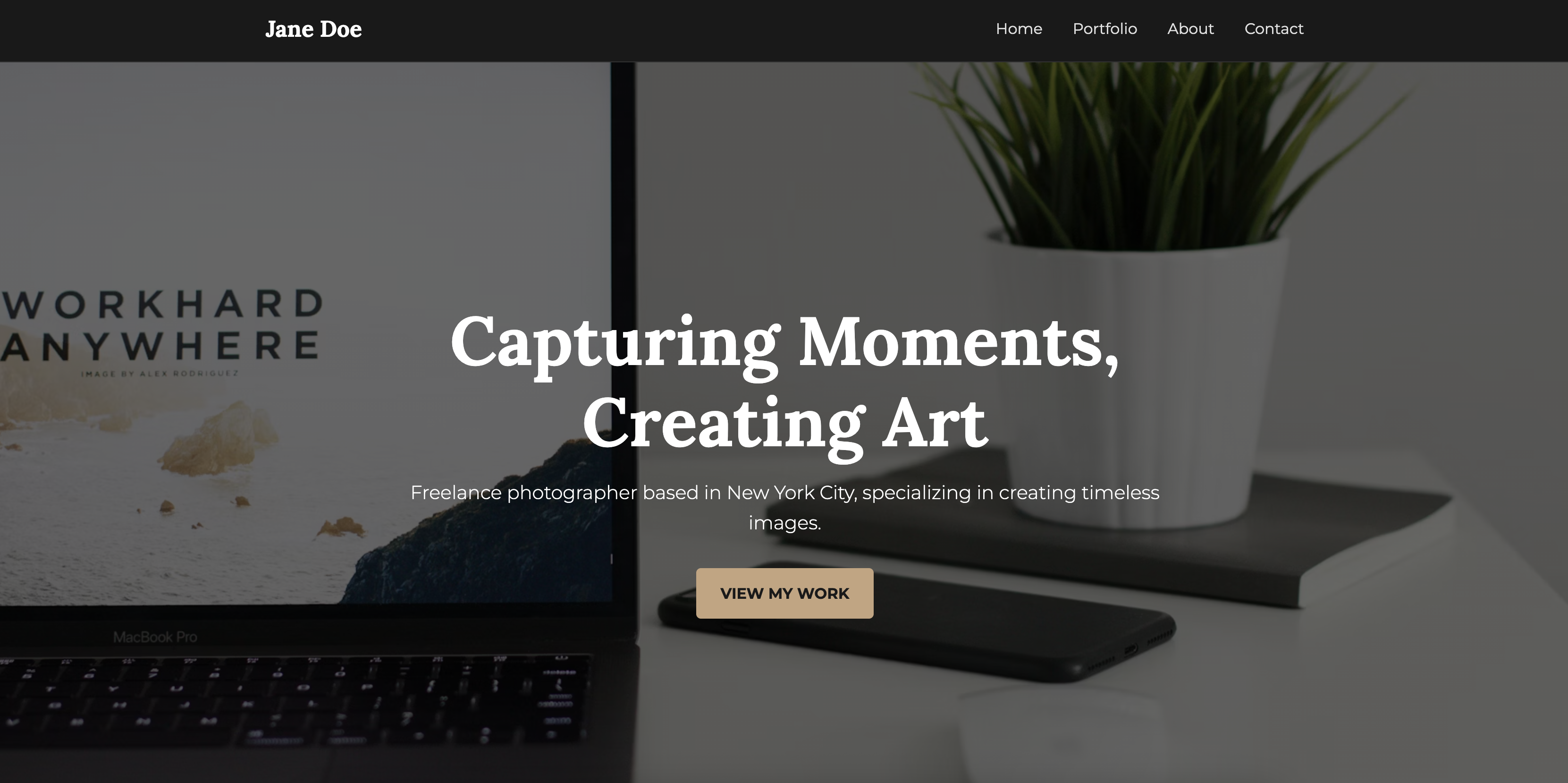AI Prompt for a Modern Freelancer Portfolio Website
Create a portfolio website from this AI prompt template.
You can enter the following prompt into a Large Language Model (LLM) such as ChatGPT, Claude, or Gemini to create a portfolio website from scratch. The prompt is quite specific with its requirements. This helps nudge the AI to a result that's likely what you might expect from a modern freelancer portfolio website.
The Prompt:
Generate a complete, single-file HTML template for a modern freelance photographer's portfolio website. The design should be clean, image-focused, and elegant.
Page Structure:
- Navigation Bar: A simple, sticky navigation bar with links to "Home," "Portfolio," "About," and "Contact."
- Hero Section: A full-screen hero section with a striking background image, a headline (e.g., "Capturing Moments, Creating Art"), a sub-headline, and a call-to-action button that scrolls to the portfolio section.
- Portfolio Gallery: A grid-based gallery section to showcase photography projects. Each grid item should have a placeholder image and a project title that appears on hover. Use CSS Grid for the layout.
- About Me Section: A simple two-column section. One column for a professional headshot (placeholder image) and the other for a brief biography and a list of skills or services.
- Contact Form: A functional and clean contact form with fields for "Name," "Email," "Message," and a "Submit" button.
- Footer: A simple footer with social media icons (use placeholder SVG icons) and a copyright notice.
Core Requirements:
- Technology: Generate a single HTML file with CSS included in a
<style>tag in the<head>.- Accessibility: Adhere to WCAG 2.1 AA standards. Use semantic HTML5 tags (
<header>,<nav>,<main>,<section>,<footer>). Ensure all images havealtattributes, form inputs havelabels, and color contrast is sufficient.- Responsiveness: The design must be mobile-first and fully responsive, adapting perfectly to all screen sizes from mobile phones to desktops. The photo gallery grid should adjust its number of columns based on screen width.
- Best Practices: Use modern CSS like Flexbox and Grid for layout. The CSS should be well-commented, and use CSS variables for the main color scheme (e.g.,
--primary-color,--text-color) and font families. No inline styles.
The Result
When I ran the above prompt against Google Gemini Pro 2.5, I got the following result:

Minor Tweak
I should mention that two of the sample stock images were broken when Gemini generated the website. I asked for those two to be redone, and it returned one successful replacement and one more broken image. I ended up replacing the image myself. In practice, missing stock images shouldn't be an issue, as you would need to replace those images anyway.
How to Use The Prompt
- Copy the entire prompt text.
- Paste it into your preferred LLM (e.g., ChatGPT, Claude, Gemini, etc).
- Review the generated code. You can ask the LLM for modifications, like changing colors or fonts, by replying with follow-up instructions.
The prompt includes a Core Requirements section that instructs the LLM to focus on quality, accessibility, and responsive design, ensuring you get a professional-grade starting point.
Be sure to check the prompt carefully for anything you want to change first. You can also use it as a template starter for future projects.